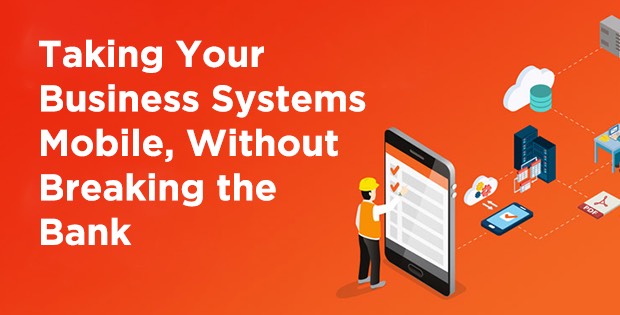Say you run a chiller manufacturing company with one location. You have experienced steady revenues over the years. But while that all sounds good, you understand that a business cannot stay stagnant for long. Occupying the same spot allows your competitors to jump ahead of you. So, you set your sights on expansion – not just to remain competitive but also to accelerate growth.
Dealing with field data consistency and function-based emergence
Take your one location as a starting point and examine how you can export your success to other branches, regionally and beyond. As a results-oriented leader, you have allowed your teams to independently manage their field intelligence tools and platforms, recognizing that their tech stack has since delivered ample value to the business. As a consequence of this carte blanche approach, your teams end up using separate applications to handle each part of the field service journey, from data collection to customer experience. What matters is productivity – and this has worked so far.
To support your expansion into more markets, you aim to buy a couple of small regional operations where you don’t have a presence, choosing locations wisely based on established priorities.
Navigating operational challenges
Considering analytics to gain a deeper understanding of the situation, you begin searching for methods to ensure consistent productivity and efficiency across all branches. However, achieving complete operational visibility is a challenging aim. Chief among the obstacles:
- Getting consistent, uniform data from all sources
- Routing the data correctly to the necessary stakeholders
- Combining both into a usable output
Data availability and consistency issues multiply across locations, field workforce, and devices, creating service quality disparities and reducing customer satisfaction.
Why data consistency is important in field service
Data generated and recorded in disparate systems causes visibility and compatibility issues. When you have to go into multiple platforms to create a digital representation of field activity, you run the risk of creating blind spots in some areas of your operations. The lack of a global platform that sees assets and technicians can also limit the accuracy of insight-based decisions as the analytics do not compile data from every available source.
Data consistency enables organizations to ramp up the precision of critical business decisions because it provides a universal view of all field activity.
Scaling toward operational excellence
Your original results-driven approach to technology will foreseeably get in the way of your analytics goal. The solution needs to be more scalable. Although effective initially, empowering teams with the freedom to choose their tools is now keeping you from realizing opportunities.
While there’s the choice to overhaul your current stack completely, it’s essential to consider the substantial resources that such a move would require in terms of budget, time, and adoption barriers. Also, there’s a risk that the move could disrupt your team’s productivity, as they have become accustomed to their existing tools. These factors collectively affect your ability to fulfill your current level of demand effectively, let alone expand it.
It’s possible to achieve complete field visibility without starting from scratch. Instead of undoing your existing tech stack, you layer consolidating technology on top of it. You opt for a flexible tool that can combine multiple data threads for seamless integrations, synchronizing the same data across platforms.
Upon deployment, you have a consistent record of all field activities and assets. Decisions can be made on live data, allowing unparalleled service levels across locations and technicians. Instead of tying up your budget, you can use the tool elsewhere in your business.
After its initial deployment, a global HVAC manufacturer expanded the tool with Multi-Language Workflows to address challenges in transnational compliance and process standardization. Now, using a singular workflow and data source, they can bridge the language gap and maintain a consistent intelligence base regardless of technician location.

Seizing opportunities in an evolving field service environment with field data consistency
The future of field service continues to evolve. There is constant pressure for more, whether revenue, market coverage, skills, or competencies. It’s clear that, increasingly, given the speed at which industries move, room for disparate technologies is getting smaller and smaller. Even when using a third-party vendor, your customers need to feel like the service they’re receiving comes from you. It’s time to embrace these facts and turn market realities into opportunities instead of accepting them as costs of doing business.




